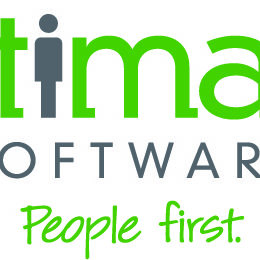
Disclosure: This post is sponsored by Ultimate Software, but all thoughts and opinions are my own.
The big buzz in the world of HR is the concept of a distributed workforce.
A distributed workforce is a workforce that reaches beyond the restrictions of the conventional office environment. These are FTEs, PT workers, temps, consultants, freelancers, flexible workers and task assistants who may or may not be paid by your payroll department. A distributed workforce can work remotely and still be local, national and international. You can learn more here.
The challenge with a distributed workforce is to make everybody feel like they’re having a fabulous time “working for you” and achieving your goals without making employment promises you can’t keep.
The other challenge is ensuring that all workers treat one another respectfully — and follow all safety guidelines — by following your company’s training and adhering to your organization’s policies and practices.
NEARLY EVERYBODY HAS A DISTRIBUTED WORKFORCE
You probably have a distributed workforce; however, you may not interact with it. HR only deals with FTEs, fully benefited remote workers, part-time employees who work over thirty hours and receive company benefits and administrative temps/receptionists.
Why is that? Why is HR’s role so small when many people come together and “work” for your company?
Well, your legal department is afraid of establishing a joint employer relationship where you and a consulting firm are both liable for the employee experience. Your company decided HR should deal with the “real employees” while everybody else has a “contractor email address,” a different color badge, and parks in a different parking lot when they come to the office.
So, we can blame the lawyers. Contractors and temps have sued companies when employment statuses haven’t been clear; then corporate lawyers overreacted and made you stop inviting contractors to the holiday party.
WHY IS THIS APPROACH A RISK TO PRODUCTIVITY?
When people work at your company, they should have one set of goals: achieving your organization’s mission while following its vision and aligning with the values.
Unfortunately, eager workers are showing up at your company on the first day and having varied and inconsistent experiences. FTEs feel welcome while everyone else is made to feel like their output — and not their humanity — is the only thing that matters.
Nobody wants that!
A second-class experience anywhere within the distributed workforce can impede your organization’s ability to do great work. While you don’t want a temp worker suing you for benefits, you also don’t want talented people opting-out
GET A HANDLE ON YOUR ENTIRE WORKFORCE
Success in a distributed workplace is measured by a worker’s ability to find what they need to achieve your organization’s goals. That’s why it’s critical for HR to be involved and have a handle on where people work and for whom. Your in-depth knowledge of the distributed workforce means lower training costs, less administrative overhead, and less risk for your entire organization.
Orientation — on the first day of work and beyond — is the biggest opportunity where you can send consistent but clear messages to your distributed workforce. HR could be involved from the onset and help the “talent” understand that nobody is a second-class citizen and all experiences matter.
But I think HR draws such a sharp distinction between employee and contractor because they don’t have a handle on who works for the organization.
-
- •The company’s HRIS is old,
- • managers fill requisitions without telling anybody,
- • and employee data sits on an unsecured spreadsheet on somebody’s laptop.
If you work in human resources, get your FTE house in order. UltiPro and its Workforce Intelligence product bring together HR, payroll, and talent management data to help you build better leaders, empower employees, and improve the overall work experience.
ALL EXPERIENCES MATTER
You can’t achieve revenue goals if everybody isn’t on board with your purpose and organizational values whether somebody works for your full-time in the office or is a remote worker paid by a consulting firm, attitudes and beliefs matter. From day one, all workers affect the tone, climate, and productivity of your company.
Begin with your full-time and part-time employees. Lay the foundation for a great workforce experience by gaining visibility and gleaning insights into your employee base. Build the right foundation and apply the lessons you’ve learned to your distributed workforce.
You’ve got to start somewhere. The distributed workforce is here, and it is time to clean up the existing employee experience before you tackle the buzzwords of the day.